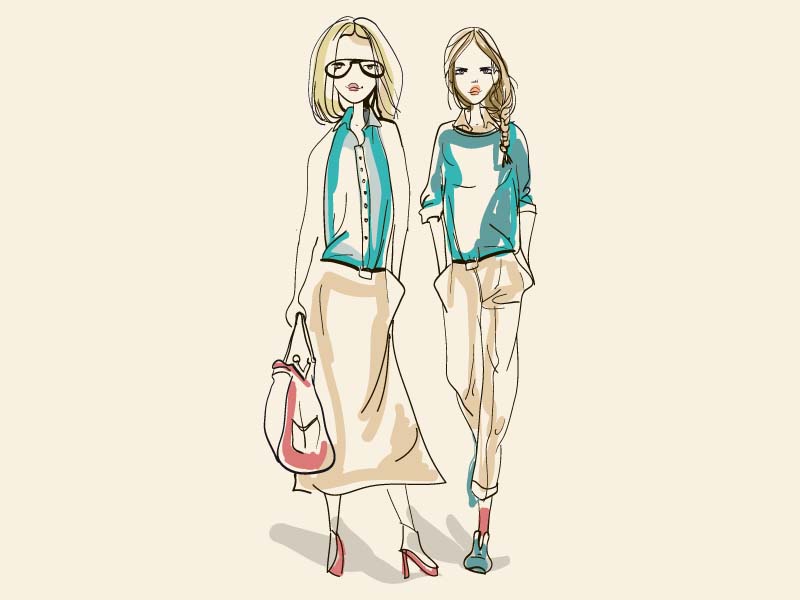
All over the world, women are classified into two categories: high or low maintenance. As dictated by certain social norms, a woman who is high maintenance is characterised as having a demanding disposition. Consequently, these women are rumoured to spend a considerable amount of time primping themselves and their surroundings, lest they appear lazy. Men often dub high maintenance women as ‘difficult to keep up with’ for they are believed to expect more out of others than they should. At the other end of the spectrum lies the low maintenance woman who advances through life with her signature laid-back style. She is believed to be less concerned with how she is perceived by society and more authentic in nature, making her appeal to the male ego better. In fact, the ‘cool’ girl seems to have dethroned the former as the new, idyllic profile of the 21st Century. Popular online portals like BuzzFeed and Elite Daily lend credence to this by encouraging women to break away from social norms and embrace their natural selves.
Either way, women generally subscribe to which ever label they feel will be approved by society. Consciously or subconsciously, most modify themselves to fit the bill for the afore-mentioned categories, depending on the one which appeals to them more. Unfortunately, in this entire hullabaloo, we forget the psychological discomfort that comes with trying to adhere to a label. Zara Israr, a clinical psychologist at the Institute of Clinical Psychology Karachi believes that the adherence gives way to an unhealthy coping strategy that involves pursuing the concept of an ideal self. “This could include altering your appearance which isn’t always achievable, considering biological and financial limitations,” says Zara. “As a result, women forget to accept their individualistic perspectives and conform to the prevalent social norms, thereby creating an environment of rejection and vulnerability for themselves.”
Both high maintenance and low maintenance are but a direct extension of the expectations that are attached to the female being. “High maintenance starts with setting high standards as a result of high expectations,” says Sarwat Gillani, one of the leading actors of the Pakistani film industry. According to Sarwat, these expectations can serve as a positive influence when they are aimed at oneself. However, placing them on others often results in over-dependency and disappointment. “Intelligent women, however, know that this [expecting themselves to be better] will help them grow, both personally and professionally.”
Often one doesn’t have a choice in the matter. Many women are employed in jobs that make unfair demands of their female employees to ‘look presentable’ at all times. “Hair, nails, make-up and clothing are critical for women in the corporate world,” explains Fauzia Kerai, a Human Resource Development and Management officer. “The outfit should be professional without being too trendy. The hair must be neat and clean and nails clipped short with subtle colours only,” adds Fauzia.
But the real question is why propagate an idyllic female profile in the first place? As per research conducted by the Institute of Clinical Psychology, a positive view of oneself is often considered ideal and comprises of various aspects such as thoughts, uniqueness and achievements. For supermodel and entrepreneur Nadia Hussain, the findings of the research are spot on. “Our focus should not be on who is high maintenance and who is low maintenance,” she says. “Instead, we should question whether or not our girls are growing,” says Nadia. For her, real achievements include anything from having a great friend to travelling the world. “The idea is to believe in and accept yourself just the way you are, free from internalised stigmas and standards,” she adds.
Times are changing and so is womanhood, albeit gradually. Just like everything else, it is evolving. Shunning labels will free the modern woman from do’s and don’ts forever, enabling her to be confident and free. So if you wish to sport sneakers under your favourite flowery sundress, then so be it! Those who don’t approve will just have to get used to it.
Being You

Earlier this year, social media saw thousands of women posting selfies of themselves with just half of their faces made up. While one side was all naturale, the other was covered with the make-up. The trend started after famous Dutch beauty video-blogger Nikkie de Jager spoke about the hypocritical practice of judging women who enjoy dressing up. In the video, Nikkie responded to the mounting ridicule. “Nowadays, when you say you love make-up, you either do it because you want to look good for boys, because you’re insecure or because you don’t love yourself,” she says in the video. “I feel like, in a way, lately, it’s almost a crime to love doing your make-up.” Soon her video went viral and women all over the world posted selfies to support the cause.
Ramsha Jahangir is a freelance writer and is currently pursuing a Bachelors in social sciences at SZABIST.
Published in The Express Tribune, Ms T, November 22nd, 2015.
































1714129906-0/Clint-Eastwood-(1)1714129906-0-270x192.webp)






COMMENTS
Comments are moderated and generally will be posted if they are on-topic and not abusive.
For more information, please see our Comments FAQ